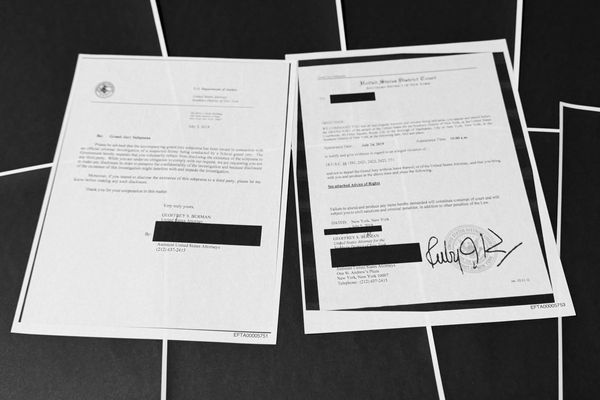
Tariffs and the Federal Reserve have been the dominant forces moving stock prices this year. But gradually, I’m seeing some separation between the stock market as a whole, and the individual stocks in it. This is potentially good news for stock pickers, since it actually rewards their skills, rather than having everything simply move alongside the indexes.
Here’s a look at three popular stocks that are actually each doing their own thing, and an analysis of where they might be headed in the weeks and months to come.
That’s followed by an updated status on my ROAR Score. If you are not familiar with this creation of mine, it simply expresses in a single number (from 0 to 100), how risky the stock market is at any point in time. It is based on more than 100,000 hours of research into what makes markets tick. I update this bottom-line indicator weekly at my personal site, SungardenInvestment.com.
Now, let’s check in on Nvidia (NVDA), UnitedHealth (UNH), and Tesla (UNH).
Stock Chart to Watch #1: Nvidia
Nvidia hit $4 trillion in market capitalization on Wednesday, the first company to do so. It has surged 90% since early April, but is up “only” 6% since late November.
Technically, the stock is now in “uncharted territory.” The good way. Its all-time high is not the impressive part, since it took a circuitous route to get there. What I see is a breakout so powerful I would not bet against it. This is a stock protected not only by its historically high adulation from investors, but also by a business that just seems to be at the center of a life-changing period in market history.
NVDA is like any stock in that it can go up or down at any time, for many reasons. But until a sustainable source of kryptonite makes itself visible, it is tough to root against Superman.
Stock Chart #2: UnitedHealth
So now that you’ve met Dr. Jekyll (NVDA), allow me to introduce you to Mr. Hyde. UnitedHealth, despite working with many doctors, has lately been giving investors one giant headache. UNH was never a trillion-dollar stock, but as recently as two months ago, it tipped the scales at more than $540 billion, which made it the biggest stock in the Dow Jones Industrial Average ($DOWI).
Since that time, it has slipped to eighth place, thanks to a more-than-50% price decline.
I am a fan of the contrarian style of stock investing, preferring to find underdogs showing signs of bouncing back. I tried, but I just can’t see that here. Naturally, UNH’s chart is a big fat mess. But it has flattened out since its flash-rally from around $250 to just above $300. Flash in the pan? It looks like it.
There’s a lot of “technical damage” here to repair. And no matter how many surgeries UNH approves (or rejects for that matter), this patient will require plenty of patience to eventually be on the mend.
Stock Chart #3: Tesla
Remember that “Yanny or Laurel,” thing from seven years ago? That’s where people heard the same voice speaking, but some heard one word, and others heard another. There was a similar situation about a dress too, if I recall.
Why bring up that recent pop culture? Because TSLA, one of the prime pop culture stocks, has been the subject of a continuous debate on Wall Street for years. You see, the bulls tout the company’s innovative technology, which they expect to extend well beyond the automobile industry. Others simply claim it is a car company, one that is struggling. And, its well-known CEO, Elon Musk, is as polarizing as the stock itself.
As if to emulate Musk’s recent foray into U.S. politics and governance, TSLA’s stock price has been up and down. The net result in the chart is a sideways pattern, albeit a wide-ranging one. But now, it is starting to hint of yet another breakdown. The PPO indicator at the bottom (chart below) is giving a stronger signal than the stock price itself.
Translation: The risk is high and getting higher. That may test the staying power of TSLA bulls, since it does not have the mojo… and earnings growth… that helps NVDA recover when it is down.
ROAR Score Weekly Update
This week, the ROAR Score remained at 40 for the ninth consecutive week. That means a conservative 2-ETF portfolio that can only be allocated to the SPDR S&P 500 ETF (SPY) and SPDR Bloomberg 1-3 Month T-Bill ETF (BIL) would now be 40% SPY and 60% BIL.
And, a more moderate-risk portfolio would be at 70% SPY and 30% BIL. That’s taking a 50% minimum SPY allocation, and applying the ROAR Score to the other 50% of the portfolio.
Since its January 2022 inception, ROAR (conservative) has outperformed its conservative risk benchmark by 10%, and ROAR (moderate) has outperformed its moderate risk benchmark by 11%, both by taking a fraction of the risk of the S&P 500 Index.
On the date of publication, Rob Isbitts did not have (either directly or indirectly) positions in any of the securities mentioned in this article. All information and data in this article is solely for informational purposes. For more information please view the Barchart Disclosure Policy here.






